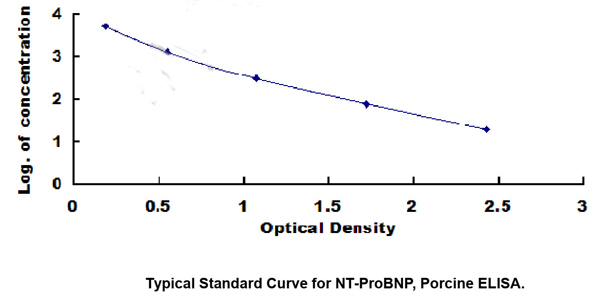N-Terminal Pro-Atrial Natriuretic Peptide Recombinant Protein | NT-ProANP recombinant protein
Recombinant N-Terminal Pro-Atrial Natriuretic Peptide (NT-ProANP)
Reactivity
Mus musculus (Mouse)
Applications
SDS-Page, Western Blot
Purity
> 95%
Synonyms
N-Terminal Pro-Atrial Natriuretic Peptide; N/A; Recombinant N-Terminal Pro-Atrial Natriuretic Peptide (NT-ProANP); NT-Pro-ANP; N-ANP; NT-ProANP recombinant protein
Host
E.coli
Reactivity
Mus musculus (Mouse)
Purity/Purification
> 95%
Form/Format
PBS, pH7.4, containing 0.01% SKL, 5% Trehalose.
Concentration
Original Concentration: 100ug/mL (varies by lot)
Applicable Applications for NT-ProANP recombinant protein
Positive Control; Immunogen; SDS-PAGE; Western Blot (WB).
Application Notes
(May be suitable for use in other assays to be determined by the end user.)
Source
Prokaryotic expression
Residues
Asn25~Tyr150
Tags
N-terminal His Tag
Subcellular Location
Secreted
Traits
Freeze-dried powder
Predicted isoelectric point
4.9
Phenomenon explanation
The possible reasons that the actual band size differs from the predicted are as follows:
1. Splice variants: Alternative splicing may create different sized proteins from the same gene.
2. Relative charge: The composition of amino acids may affects the charge of the protein.
3. Post-translational modification: Phosphorylation, glycosylation, methylation etc.
4. Post-translation cleavage: Many proteins are synthesized as pro-proteins, and then cleaved to give the active form.
5. Polymerization of the target protein: Dimerization, multimerization etc.
1. Splice variants: Alternative splicing may create different sized proteins from the same gene.
2. Relative charge: The composition of amino acids may affects the charge of the protein.
3. Post-translational modification: Phosphorylation, glycosylation, methylation etc.
4. Post-translation cleavage: Many proteins are synthesized as pro-proteins, and then cleaved to give the active form.
5. Polymerization of the target protein: Dimerization, multimerization etc.
Usage
Reconstitute in ddH2O to a concentration of 0.1-0.5 mg/mL. Do not vortex.
Preparation and Storage
Storage:
Avoid repeated freeze/thaw cycles.
Store at 2-8 degree C for one month.
Aliquot and store at -80 degree C for 12 months.
Stability Test:
The thermal stability is described by the loss rate. The loss rate was determined by accelerated thermal degradation test, that is, incubate the protein at 37 degree C for 48h, and no obvious degradation and precipitation were observed. The loss rate is less than 5% within the expiration date under appropriate storage condition.
Avoid repeated freeze/thaw cycles.
Store at 2-8 degree C for one month.
Aliquot and store at -80 degree C for 12 months.
Stability Test:
The thermal stability is described by the loss rate. The loss rate was determined by accelerated thermal degradation test, that is, incubate the protein at 37 degree C for 48h, and no obvious degradation and precipitation were observed. The loss rate is less than 5% within the expiration date under appropriate storage condition.






















